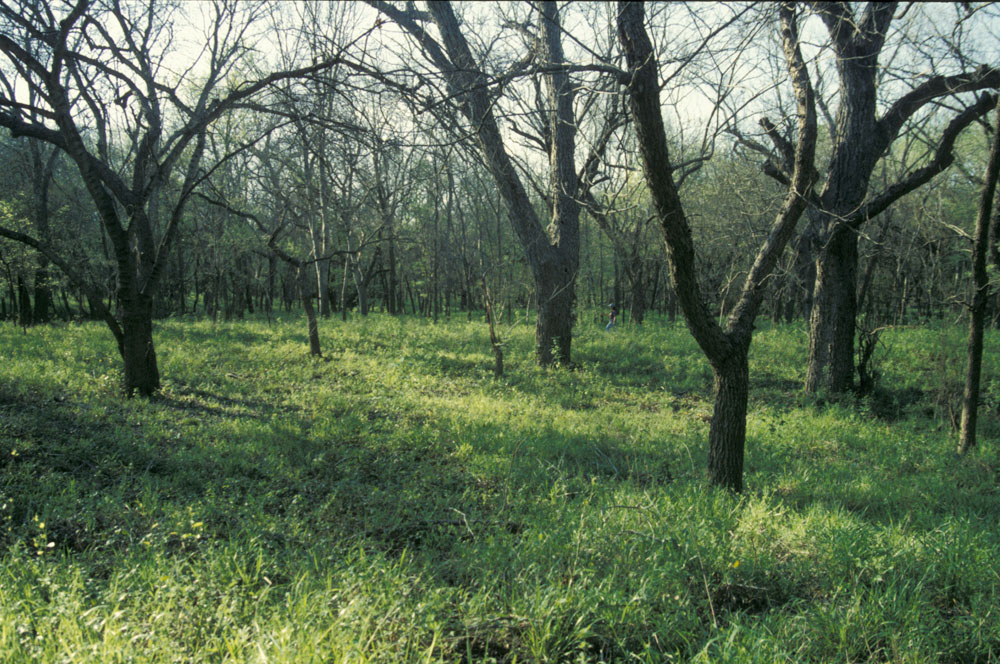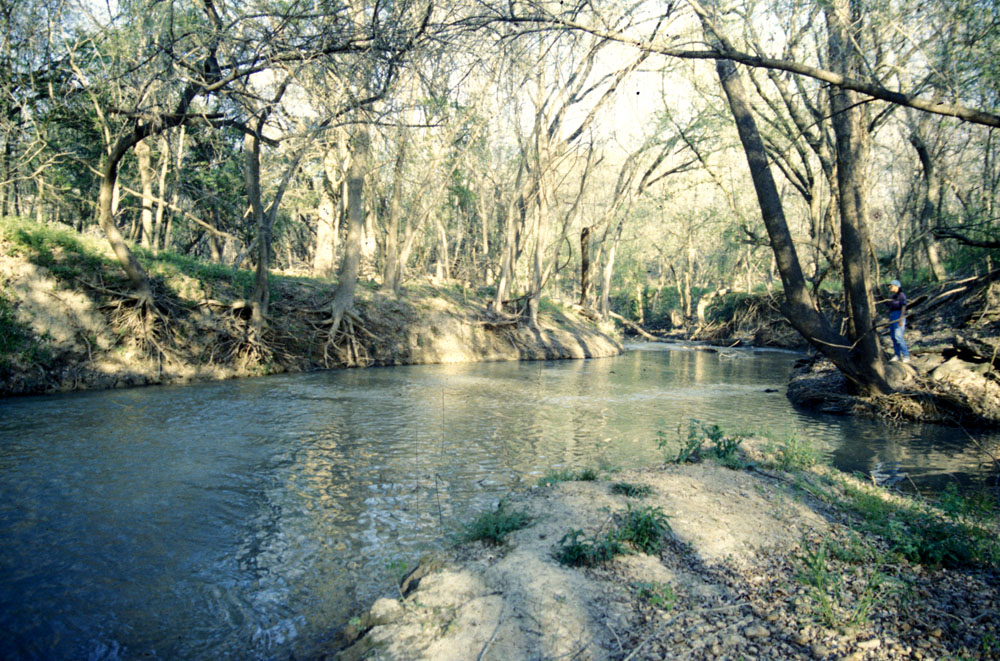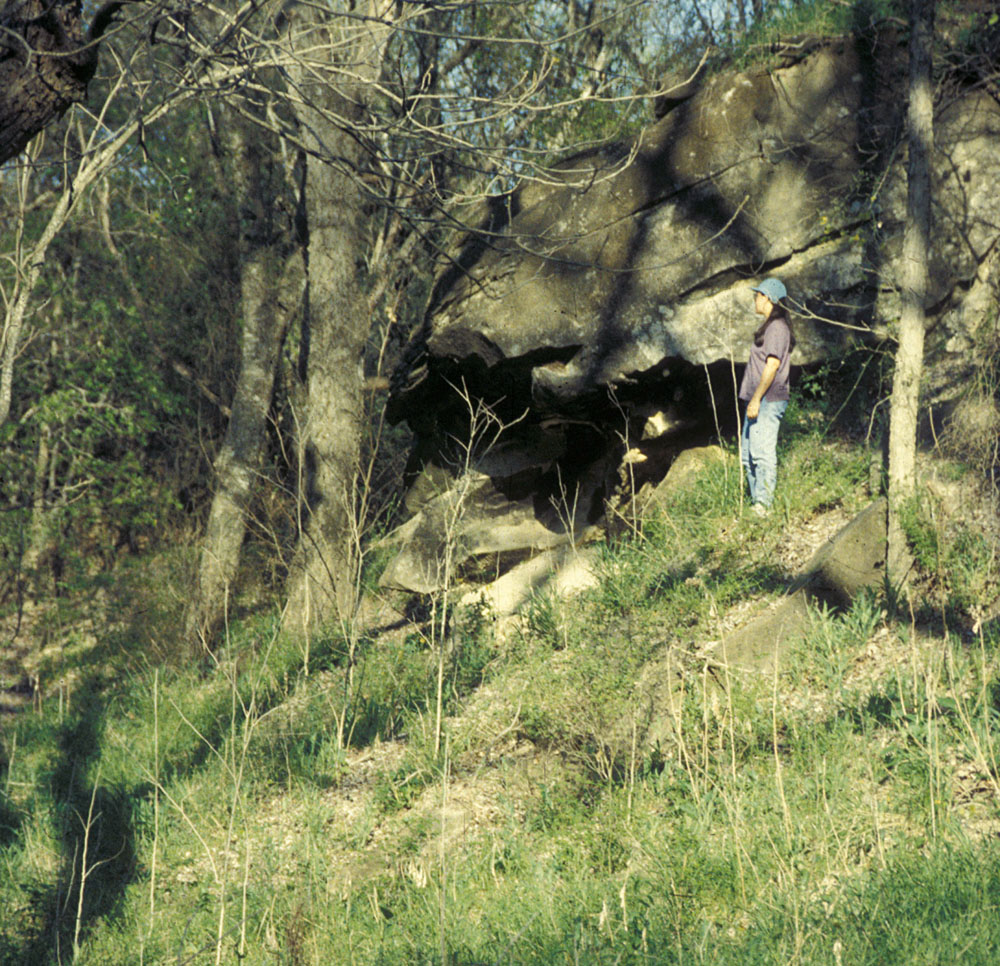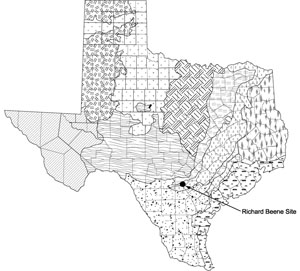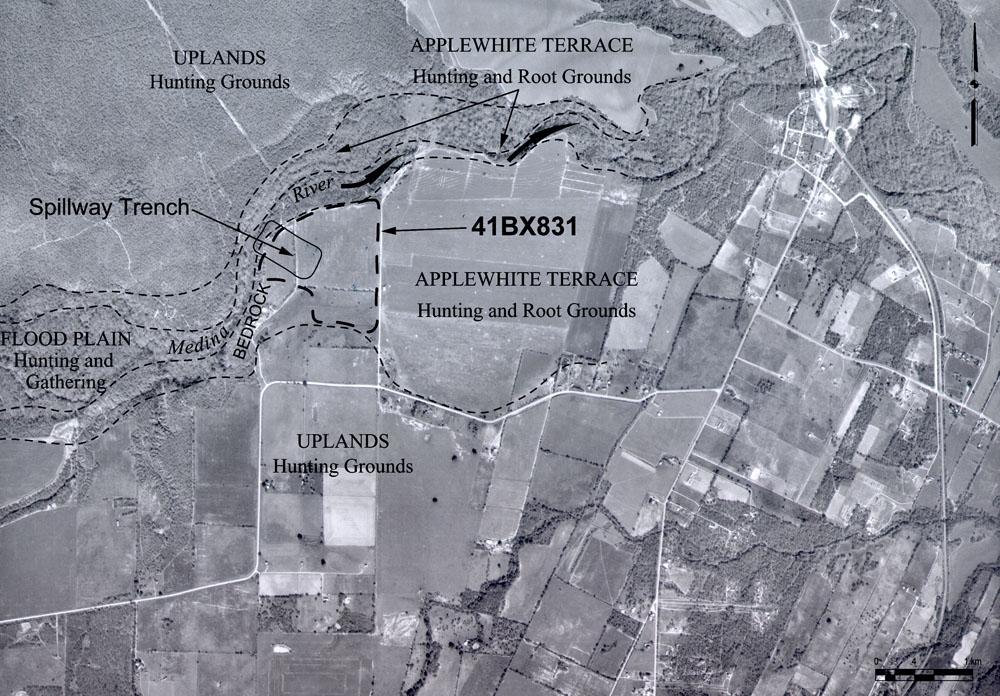|
Like the uplands, the terrace was home to a variety of large and small animals hunted by the occupants
of the site. The wide terrace, however, played a far more important role as the source of a
variety of root foods used extensively by the native groups at the site. The roots or bulbs of plants
such as onions, lilies, and false-garlic would have been baked in earth ovens before being eaten. The
tuna, or fruit, of prickly-pear cactus still found near the site today also would have been a sought-after
food source. The earliest Europeans to visit the area near the site documented native groups harvesting
prickly-pear tuna, and there is abundant evidence for the kinds of ovens used for baking root foods at
Beene.
The site is located within the ancient floodplain of the Medina River. This resource area, which includes the river itself, was heavily utilized by the native peoples who camped nearby. Gravel bars in the river provided a source of stone for tool-making, and sandstone outcrops lining the floodplain provided cook-stone for use in baking plant foods gathered on the terrace. The Medina River not only provided water for the site's occupants, but also for trees such as pecan and hickory, which would have been a source of food and fuel. Remains of river mussels, turtles, and fish at the site attest to the importance of these resources in the prehistoric human diet. The propensity for large-scale overbank flooding was also important in that fine-grained flood sediments were routinely buried and thereby preserved the site's cultural materials for future generations.
Paleoclimate
Environmental conditions in the upland areas near the Richard Beene site changed throughout
the last 18,500 years. Temperature, precipitation, and the relative proportions of grassland and woodland
fluctuated considerably through time. Beginning about 15,000 radiocarbon years ago
(16,500 B.C.) a relatively moist climate dominated the area. A shift to a relatively drier
climate with periodic flooding occurred about 12,500 radiocarbon years ago (12,750 B.C.), lasting to about 7000 B.C. Conditions became much warmer with low moisture at this time, remaining
this way until about 3000 B.C. when a moister climate similar to the modern one began to
dominate.
In contrast to these changes on the uplands, the Medina River bottomland seems to have been relatively stable over the same period of time. Paleoclimatic data obtained from snail shells indicates that savannah vegetation occurred on the terrace, dominated by grasses, with only moderate occurrences of trees such as oak, pecan, hickory, and mesquite. Some of the same species of river mussels were exploited by prehistoric peoples throughout the occupation history of the site, indicating no major changes in the riverine environment. Analysis of 3000 year old pollen preserved at the site confirms this environmental stability, indicating that the same tree species found near the site today were present at that time. The relative environmental stability of the floodplain area may have been one of the main reasons that native peoples returned to the site over and over again throughout the last 10,000 years.
|
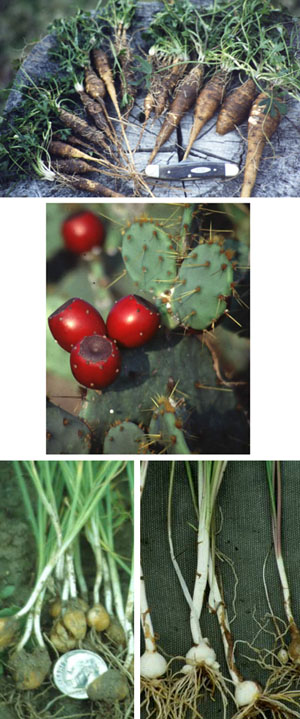
Common plant foods available in the site area would have included many different species, including many geophytes (roots, tubers, and bulbs). From top to bottom, wine cup tap roots, prickly pear tunas, false garlic bulbs (left), and wild onion bulbs. Photos by Alston Thoms. "Enlarge" to read compiled list of likely plant foods.  |
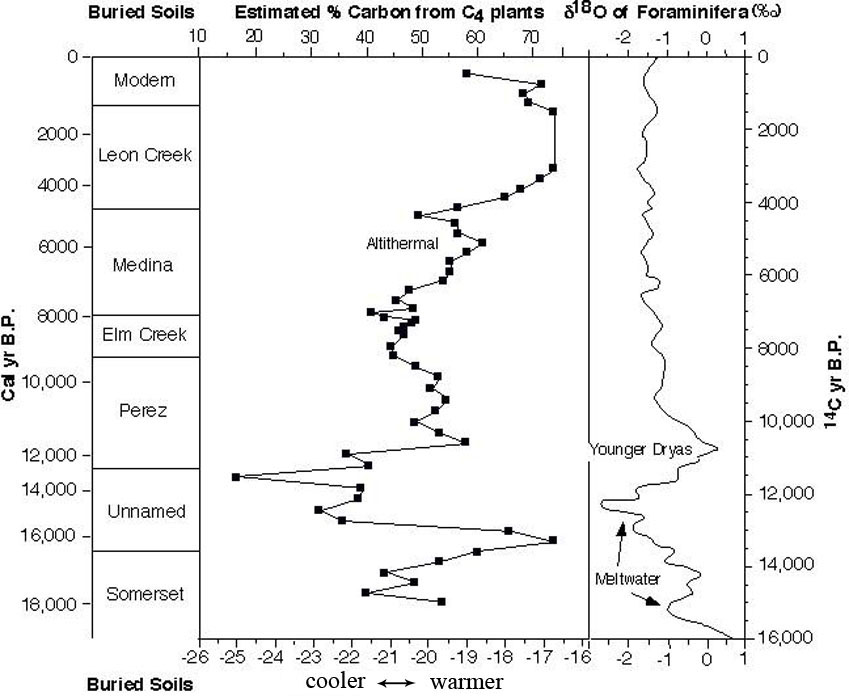
Paleoclimatic reconstruction based on several lines of evidence from the Richard Beene site.  |
|
